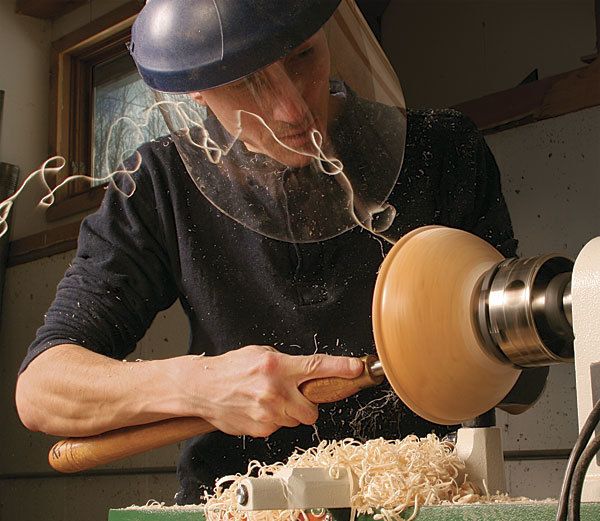The Lathe Accessory Everyone Needs
A 4-jaw chuck will change the way you turn
Synopsis: You’ve purchased a lathe and a decent set of turning gouges. You’ve started to turn. Now that you’re serious about turning, what should be your next big purchase? A four-jaw chuck. Ralph Tursini explains why chucks have been steadily replacing faceplates over the past few decades as the preferred way to turn bowls and other hollow forms. Then he shows how to choose the right size chuck for your lathe and the right jaws for the job at hand. He also demonstrates a number of useful shopmade accessories for sanding, polishing, and turning small items. Finally, he points to the accessories you’ll want to invest in when you’re ready to get even more out of your new chuck.
Since their introduction to woodworkers in the mid- 1980s, four-jaw chucks have been steadily replacing faceplates as the preferred way to turn hollow forms, because they make the process faster and easier, especially for beginning turners. But four-jaw chucks aren’t just for bowls and vases. A chuck allows you to use a number of useful shopmade accessories for sanding, polishing, and turning small items.
In fact, a four-jaw chuck is such a valuable tool that I advise my students to make it their next big purchase once they have a decent set of turning tools and some experience at the lathe.
Match the chuck to the lathe
While there are exceptions, chucks come in two basic body sizes (41⁄2 in. and 31⁄2 in.) that correspond to the two basic classes of lathe (see “Choosing a chuck,” p. 62). You can put the smaller chuck on larger lathes with an adapter, but these can be difficult to remove and tend to amplify vibration, so I avoid them.
Since there are so many lathe models, chucks have a threaded insert that’s specific to the lathe spindle, so you’ll need to know the spindle diameter and thread pitch before you buy. If you have a modern lathe, knowing the manufacturer and model number will likely be enough, as most chuck manufacturers have an application chart to help you get the right insert.
Securing your work
You can use the chuck’s jaws to grip a tenon or you can expand them into a recess, but it’s best to grip the work because wood has greater compressive strength than tensile strength, especially perpendicular to the grain. This makes using a recess a delicate balance: expand the jaws too much and your work will split; expand them too little and the workpiece could loosen. Rather than using a recess, it often makes sense to turn the work with a tenon (for gripping) that can be removed later (see “Turning a bowl,” pp. 64-65).
The jaws that come with chucks have either a smooth, serrated, or dovetailed profile. I prefer the serrated profile, as it provides the best grip with the least amount of pressure. dovetail jaws also hold well, especially inside a recess, but matching a tenon to their exact shape can be tedious.
From Fine Woodworking #212
For the full article, download the PDF below:
Fine Woodworking Recommended Products

Dividers

Starrett 12-in. combination square

Stanley Powerlock 16-ft. tape measure























Log in or create an account to post a comment.
Sign up Log in